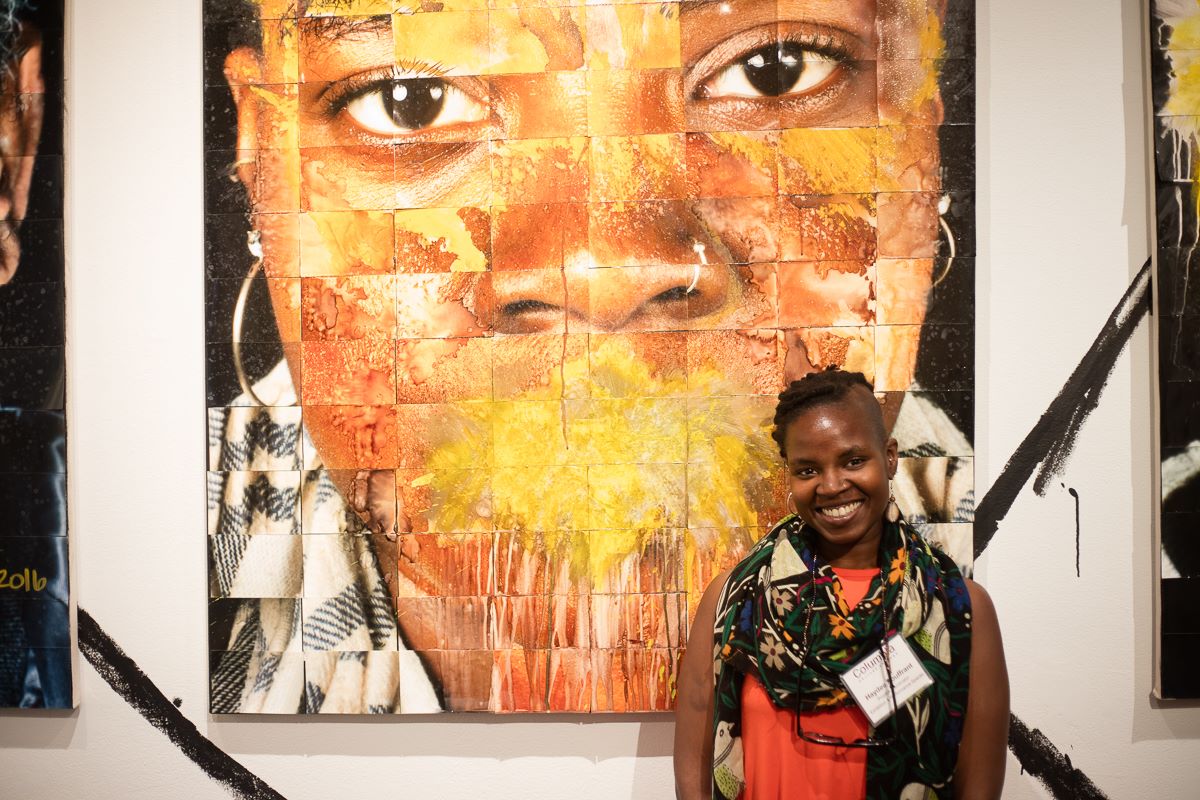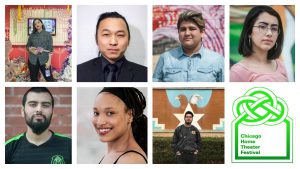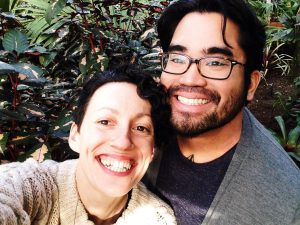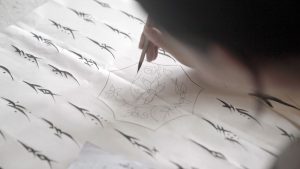Hey beautiful humans,
You may be wondering what the purpose of this column is. Well let me tell you. In my tribes and chosen family, I am Grandmama Willow. The grannie. The one who everyone comes to to get some “sage words”. Let me just say, we all have that intuition, that deep knowledge and ability to know what’s best for us and our communities. But who doesn’t love a little advice to help us along right?!
So this is for the art makers, the shakers, the questioning-your-craft-and-self folx.
—Haydée
Q: Sometimes art spaces end up using artists of color to hide the negative impact they are having on our communities as far as encouraging gentrification and displacement of residents and businesses. How can I tell if a space that is interested in working with me really cares about my community and doesn’t just see me as window dressing?
A: WOW… way to come outta the gates with this question. How do you know an art space isn’t just using you for window dressing?! Well, first you have to acknowledge that the majority of the fine art world has never been built for artists of color. For instance, if you find that the art space is overflowing with people who have had a visible history of churning out creative work that is on the surface and glazes over the “hot social justice topic,” you can’t get a better sign than that.
But if you find yourself working with individuals who express a deep and empathetic need to challenge what is or has been done artistically, who create spaces where it becomes safe to express and explore hard topics that many communities and artists of color face, then that’s the spot. But this all really boils down to asking yourself “what kind of art do I want to make? Do I want to make something that connects to the everyday human experience- or are am I looking to create something that sparks change and dialogue?” Once you know where your internal compass is pointing for creating, you can at least know what art spaces feels safe to you. Or, you can do what some of the greats like James Baldwin, Frida Kahlo, or countless others have done, and just do yo sh*t. If they want window dressing, let them deal with broken windows then.
Q: I grew up in a fairly diverse area and am just now finding myself in majority white spaces in my professional life. It’s all very new to me and I am having a difficult time adjusting to dealing with all of the microaggressions and micro-invalidations that seem to come with the territory. Ideally, I would like to work in a more diverse environment, but I realize this won’t always be possible. Are there any coping strategies you can recommend or any red flags I should look out for in the interviewing process?
A: Ohhh this is a good one. For the record, I grew up in a town that was “diverse”, but was one of the only Haitian American kids out of a handful of other kids of color in ALL my classes. (#thatsuburbanstruggleisreal)
Here are my top five coping strategies that took me way too long to put in my “Surviving Life Toolkit” when it comes to applying for professional opportunities. Sometimes less is more, especially as you’re figuring out who you are and what goals you’re making out of your dreams. Most of these are various forms of art therapy, so have at it.
- Honestly, the first red flag that should come up is if you are the only person of color in the room, the floor, or the building. If you are, but you’re interviewing for your dream job and you hopefully get it, connect with your CREW. Your crew is your CHOSEN FAMILY. They’re the babes that stick by you when things get rocky, call you out on silly behavior, Netflix binge with you when your lover/bae cancelled plans and validate your experience when that one coworker says some off the wall nonsense that’s vaguely racist.
- Journal or do some Free Conscious writing. Allowing yourself to write about your experience without judgment a goal is a beautiful thing my friend. Stop thinking about what you want to write. If that doesn’t work for you, try this writing exercise
- Find your Center. And keep it. If you meditate- go do it. If you sing to relax, loosen up those vocal cords. Do some deep breathing into your belly and release all the crazy people in your office are trying to fill you up with.
- COLOR! Everyone’s talking about adult coloring books. Why? Cause they’re the bees’ knees, and they help to release stress and bring out your inner Zen as you get your Crayola on. But sometimes those puppies go for $10-$15. Me? I’m a huge fan of free coloring pages sites like Coloring Pages for Adults. I keep a stack in my office, in my bags, and apartment. Yes… I love coloring very much thank you. BONUS: you can frame them and do some serious art deco.
And if all that fails…(which it won’t but I believe in room for error)
- Masturbate. Because it feels f’ing amazing. Okay, but seriously, it never ever hurts to get sexy with yourself. It helps you destress (and sleep) because of a nice dose of dopamine and serotonin (happy/pleasure feels), and studies are starting to show that increased sex (protected babes, protected) can help improve your immunity from your coworkers, decrease heart disease and strengthen self esteem and awareness.
Even if none of the above jive with you (I mean, they probably will, but to each their own), the important take away is finding the small, doable actions that help you stay YOU. Because let’s be honestly, you’ll find yourself in a situation that requires you to check in with yourself and say “Oh lawd this does NOT sit well.” And if that’s the case, and you want a little support in navigating the art/work/adulting life balance, send me a question. If you have a weird and loaded situation you have no idea what to do about, send that puppy in too. Cause Grandmama Dee’s got your back—well, I’ll try to anyway as I navigate this life too. Let’s do it together.
Got a question? Write in to GrandmamaWillow@gmail.com to be featured in the next Brown Girl’s Guide to Thriving in the Struggle.
Featured image: Haydée Souffrant standing in front of a work by Ervin A. Johnson at the #InHonor exhibition at C33 Gallery. Photo credit Billy Pilkenton II.
 Haydée Souffrant is a Chicago-based multimedia artist crafting work through storytelling, lyrical text, movement and visual/performance art to document the legacies of trauma one inherits throughout cultural, familial, and societal generations. Bridging together narratives of mental health + wellness within black and brown communities, Haydée’s work seeks to stimulate conversations on how do communities maintain survival in sharing stories of struggle and resistance alongside alternative healing practices. Studying West African dance forms with the Dance Diaspora Dance Theater Ensemble of Oberlin College, Haydée’s literary and visual work has been featured in numerous online literary publications, Oberlin College, The Whitney Museum, Links Hall and other venues in and around Chicagoland. Haydée is a graduate of Oberlin College, and a MFA candidate in the Interdisciplinary Arts + Media program at Columbia College Chicago with her work focusing on the intersections of storytelling, mental health, legacies of trauma + healing across communities of color. Also a Reiki practitioner and founder of The Rooted Turtle Healing, as you can tell, she loves turtles and writing things.
Haydée Souffrant is a Chicago-based multimedia artist crafting work through storytelling, lyrical text, movement and visual/performance art to document the legacies of trauma one inherits throughout cultural, familial, and societal generations. Bridging together narratives of mental health + wellness within black and brown communities, Haydée’s work seeks to stimulate conversations on how do communities maintain survival in sharing stories of struggle and resistance alongside alternative healing practices. Studying West African dance forms with the Dance Diaspora Dance Theater Ensemble of Oberlin College, Haydée’s literary and visual work has been featured in numerous online literary publications, Oberlin College, The Whitney Museum, Links Hall and other venues in and around Chicagoland. Haydée is a graduate of Oberlin College, and a MFA candidate in the Interdisciplinary Arts + Media program at Columbia College Chicago with her work focusing on the intersections of storytelling, mental health, legacies of trauma + healing across communities of color. Also a Reiki practitioner and founder of The Rooted Turtle Healing, as you can tell, she loves turtles and writing things.






